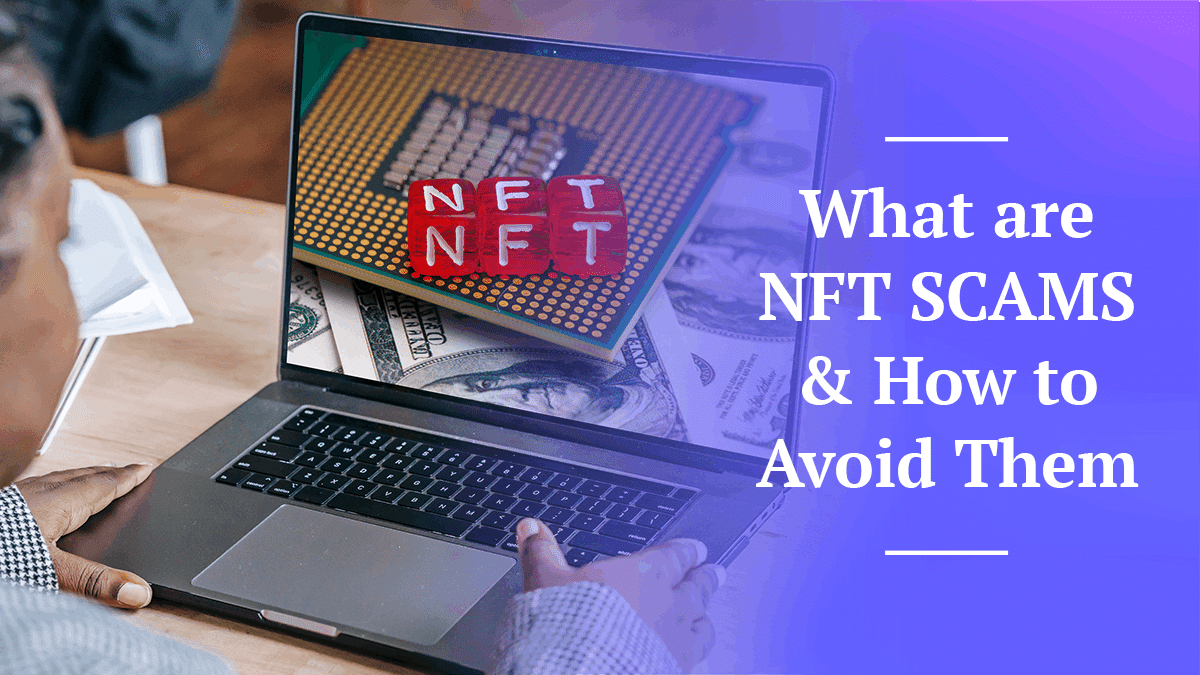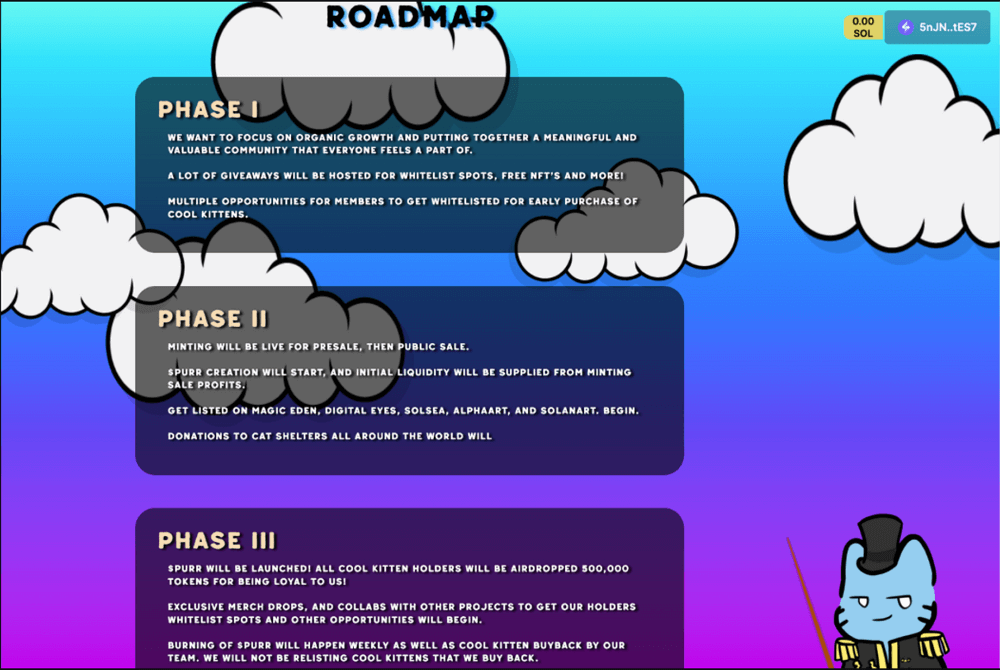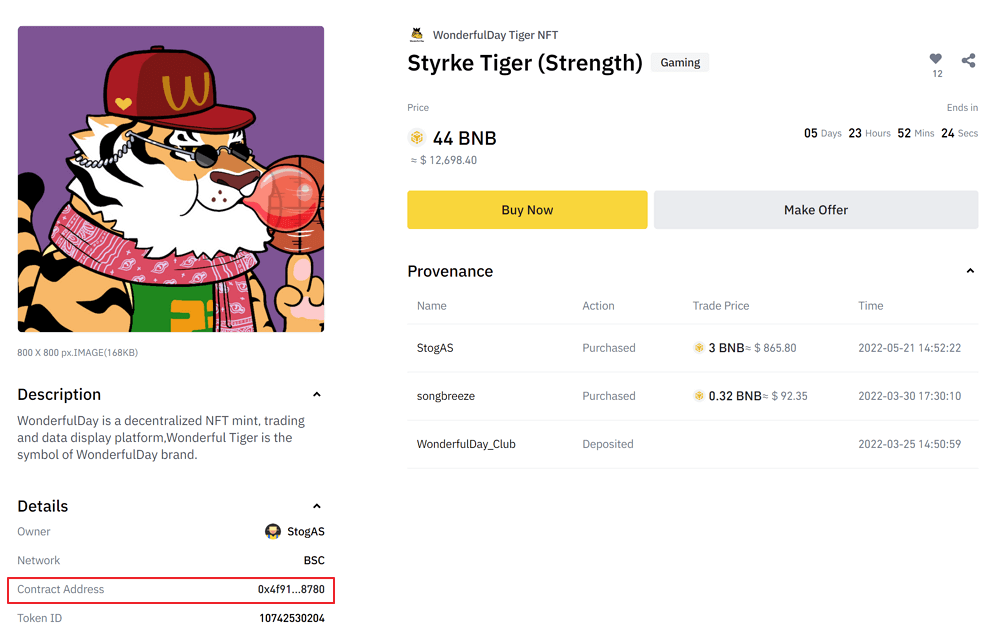
5 Common NFT Scams and How to Avoid Them in 2025
Quick Answer: How to avoid NFT scams
Always research NFT creators and sellers before you send them any money, and check to see who has already bought a certain token. Whenever you see stolen art, report it. Finally, practice basic online security with a VPN. I recommend NordVPN.
You can try it for free with a 30-day money-back guarantee.
A scam is a scam, but a scam that exploits blockchain digital collectibles and non-fungible tokens (NFTs) is downright diabolical. Evil geniuses, huh? NFT scams are on the rise as more designers and digital artists embrace this new tech-powered revenue stream.
In case you’re not familiar, NFTs are cryptographic tokens that are easy to transfer like any other cryptocurrency. However, they possess an additional quality that makes them even more valuable — they’re one of a kind.
You’d be surprised at the lengths people will go to claim something that’s unique, especially where crypto is concerned. The cryptosphere is full of people who want to take advantage of others. It’s the Wild West, and the only way to protect yourself against con artists is to be a good judge of character.
- Best VPN for trading NFTs
One thing I’ve learned while reading up on scammers is they’re constantly coming up with new tactics to lure their prey. However, with the right amount of research and self-education, you’ll be able to spot some red flags.
In this post, I’ll go over the danger signs to look for and how you can make sure you’re not being suckered into one of the most common NFT scams.
Are NFT scams common?
NFT scams are on the rise as NFTs grow in popularity. Keeping your NFT accounts and crypto transactions safe online during NFT sales and purchases is important. Beware of free NFT giveaways and NFT fraud.How do I know if my NFT is legit?
You can use Google’s reverse-check tool to see how long your NFT has been online and how many variants exist. If you see a blue checkmark by the title, you’ll know it’s from legitimate NFT sellers.Is NFT money real?
NFTs are recorded via the blockchain and can be exchanged for money and cryptocurrency. They can also be traded on legitimate NFT trading platforms for other NFTs in the marketplace.
5 NFT Scams to Watch Out For
NFTs are a buzzy topic in the digital market right now. Some see them as a way for crypto to break into the mainstream because it’s easy to understand why people would want to collect unique items — think about how much people love Beanie Babies or rare Magic: The Gathering cards.
The idea behind NFTs is that users can share their collections online and sell them to other collectors who are willing to pay top dollar for them.
You can imagine how the potential for scams arises with NFTs. Greed is universal, and NFTs are rare and unique — and can be sold at exorbitant prices. They can also be easily counterfeited by scammers who know what they’re doing. That’s where these common NFT scams come in.
1. NFT Exit Scams & Rug-Pull Scams
As the first NFT projects were being launched, many users had to rely on outside sources for information about how to trade and use their newfound crypto assets. Sometimes, these sources were less than honest about what people could expect from their so-called legitimate NFT project.
One instance of this involved a project meant to create a network of rare objects called Cool Kittens. Through avid promotion, its Twitter account grew to over 20,000 followers, who were keen on cashing in on the NFTs’ offerings.
Buyers of “Cool Kittens” NFTs were told they’d get three things for their NFT purchase:
- A cat art digital token piece
- Cryptocurrency built for the community called $PURR
- Membership in a decentralized autonomous organization — basically an exclusive community for NFT owners

Sounds pretty cool, right? Maybe if it had actually happened.
The Cool Kittens sold fast, with over 2,200 NFTs moving at $70 each. However, it was later found that some users who were hyping up the sale and claiming to have bought into the community were actually bots designed to pump up the price.
Buyers noticed too late. The community chat room that was promised upon entry to new members was deleted and the NFT founders ghosted the purchasers. The buyers found themselves unable to sell their NFTs as they’d planned, rendering their investments worthless.
Cue sad meow sounds.
This is known as a “rug pull” scam, where a project sets up an initial offering of tokens only to retract them later. The scammy developers create a new NFT, pump up the price with fake (often bot-driven) hype, then abscond with the money and leave their buyers holding the bag.
That’s why a rug pull scam is typically classified as an exit scam, where the sellers vanish with the buyers’ money before delivering on the sale.
2. Phishing & Typosquatting NFT Scams
NFT email scams are more common than you’d think. With email phishing, scammers trick users into thinking the email is from an NFT employee and send them to a fake NFT site to enter their credentials. Scammers also use links that can put malware on your device.
Sometimes scammers try to lure the victims by giving them an offer that seems too good to be true. Think of the Jamaican Lottery scam with an NFT twist. You might get an email promoting a rare and exclusive NFT at a far more reasonable price than one could ever imagine getting — and if it sounds absolutely unreal, it probably is.
Another common scammer technique is “typosquatting.” A typosquatter registers a domain that’s a typo away from a popular NFT site (like “nffey” instead of “nftey”) and then tries to pass it off as the official site.
Some typosquatters even create fake NFT accounts, so you’ll think you’re receiving a message from an official NFT account. These are called “sock puppet” accounts.
When you’re doing anything online, be careful about the sites you visit and don’t trust emails from people or companies you don’t know.
3. Pump-And-Dump NFT Scams
Pump-and-dump schemes were popularized in the stock market. They work like this: A group of people collude to start buying a specific type of token, sometimes even creating new accounts to do so.
When the tokens are valued far above their actual worth, the schemers sell their tokens in a coordinated manner, often driving prices down by as much as 80 percent. The investors who bought at the inflated price lose their money, while those who orchestrated the scheme make a tidy profit.
If you follow the financial news, you may have heard the name GameStop come up in the last year. That’s because this is exactly what happened with the company’s stock. And it can happen in the NFT space, as well.
It’s important to remember the value of an NFT or NFT collection is based on the network effect — the more people talking about and promoting it, the more valuable it becomes.
This is especially true of NFT collections, which have multiple similar but distinct NFTs, such as the Cool Kittens from before or the Holy Primes NFTs. In fact, Holy Primes ended up pulling a pump-and-dump of its own.
Usually, NFT sellers who intend to scam will pump up the price of the NFT by organizing promotions via influencers or leveraging social media communities to get their followers talking.
Pump-and-dump NFT scams are often based on appealing to those who want to cash in on the popularity of certain types of digital assets when they’re generating buzz.
Some signs of this scam include:
- The seller has a huge Twitter/TikTok following, but barely any engagement.
- The seller has a huge Twitter following but an insignificant number of Discord users on their channel (or vice versa).
- The seller over-promises during the initial promotion process.
These scams prey upon unsuspecting buyers and can create a negative environment for NFT trading.
4. NFT Bidding Scams
If you’re new to the digital collectibles scene, you might not know about bidding scams. This type of scam is when a seller receives a winning bid for an item in their preferred currency, but the buyer pays in a much less valuable cryptocurrency (we’re talking, like, 10 cents or less on the dollar).
If you’re new to the digital collectibles scene, you might not know about bidding scams. This type of scam is when a seller receives a winning bid for an item in their preferred currency, but the buyer pays in a much less valuable cryptocurrency (we’re talking, like, 10 cents or less on the dollar).
While it seems like it should be easy to spot when this happens, scammers have gotten really good at making fake orders and fooling sellers into thinking they’re real.
A good way to battle this NFT scam is finding NFT platforms that offer the kinds of payments/digital wallet you’re willing to receive for an NFT.
5. Stolen NFTs
The stolen NFT scam occurs when someone other than the original artist of an NFT sells it while the rights to the work are still owned by the original artist. Because the artist has not given their consent, buyers of these NFTs could be liable for copyright infringement.
Plus, it’s illegal to sell stolen property, so the NFT you just bought is now worth a cool $0; an NFT creator needs to buy the art first before turning it into an NFT — or fractionalized NFT.
This problem can be avoided by making sure to buy from reputable sources (like the Decentralized Marketplace). However, if you find out too late that one of your prized possessions has been deemed an illegal asset, there may be little recourse for getting your money back.
How to Avoid NFT Scams
The NFT industry is in its infancy and fraud is rampant, so it’s a good idea to know what you’re getting into before you take the leap. Here are some tips to help you steer clear of the bad eggs.
Research NFT Creators and Sellers
If you’re thinking of getting into the NFT business, you may have found there aren’t that many people to ask about who’s legit. In an industry where hot tips are everything, people may be loath to share what they know. You might have to do most of your research yourself.
I recommend buying from people who have been involved in the NFT community for a long time, as they are more likely to be a trustworthy seller. If someone has been deep in the trenches of the NFT space, they have already proven their trustworthiness by participating in a community where owning assets can be risky.
When evaluating someone, look at their history and reputation within the NFT community. Someone who is legit will have made their name known in forums and other social groups related to NFTs.
Ask yourself:
- Has this person been involved in buying and selling different NFTs on more than one platform?
- Does the seller have a good reputation in different marketplaces?
- Do they have good feedback across multiple sites?
It’s also worth checking the reputation of sellers who might be the original founders of the NFT they are selling. Have they bought and sold NFTs outside of their own invention? First-time sellers who are presumably also founders are worth putting under the magnifying glass.
If they haven’t put in the effort to develop a reputation online, it’s probably because they’re not really interested in being part of the NFT community. More likely, they’re just looking for an easy way to trick people into sending them money.
Make sure any person or company you deal with has a history in this niche before you send them money.
Check Who Has Bought the NFT in the Past
We’ve already talked about how a pump-and-dump scheme works in the crypto world. You may have seen it happen. An unknown coin comes out of nowhere to be all over the news. Just as suddenly, it’s not on the front page anymore; and it turns out, the coin was created by scammers to lure people in and sell high off their backs.
The operators of these scams are hoping you won’t dig into the background of their shady assets, but the whole point of blockchain marketplaces is that you can see the entire transaction history. You can use this to detect pump-and-dump schemes.
The next time you hear about a new NFT that’s taking off, check who has bought it in the past. Most NFT-trading platforms allow you to view the transaction history of an NFT by checking the associated contract address. Here’s an example on the Binance platform:

You can also use more general tactics by doing some Google searches and going full Sherlock on the NFT creator’s official webpage. Look into whether the seller has a verified account (in the NFT world, on a legitimate trading site and on social media channels) and whether they’re part of any questionable NFT platforms or circles.
Are there certain accounts buying huge amounts as soon as listings open? If so, that’s a good indication they’re in cahoots with the sellers.
Also watch for sudden spikes in volume that seem out of proportion with normal activity. If a previously-unknown NFT explodes in price, there’s a good chance an organized group is behind the spike.
Report Art Theft
With the rise of online marketplaces, it has become easier than ever for someone to sell a stolen piece of art as an NFT scam — and even harder for the rightful owner to get it back. Luckily, there are measures in place to help artists track down stolen works.
The Art Loss Register is a database that tracks millions of individual pieces of art by serial number and artist signature. No matter how credible the piece of art you’re looking at looks, make sure to run a check through the database to make sure it’s a legitimate NFT.
You should also make note of where you saw the piece because on the off chance something fishy is going on, it could be part of a fake NFT marketplace.
If you know or suspect that artwork is counterfeit or stolen, you have an opportunity to make a difference. Use the NFT marketplace tool to report the theft, and stop a thief from getting away with it.
Practice Basic Online Security
Scams happen in every industry, but they’re especially prevalent in digital asset trading. If you’ve spent any time trading NFTs, you might have encountered people trying to take your information or trick you into paying more than you should.
While it may be tempting to get into the ring with these scammers, you’ll have more success if you focus on simple security measures.
The basic rules:
- Don’t click suspicious links.
- Don’t give your information to people you don’t know (except what’s necessary to make a transaction).
- Don’t download files from strangers without verifying them first.
With NFTs, these rules are even more important. Never click a link until you know where it leads and who sent it, no matter how official it looks or how many trustworthy names it drops.
If you get an email from someone telling you the NFTs you want are on sale at a super discounted price, but they want you to pay outside of established channels, treat it as an obvious scam.
Also, don’t send money over the internet without seeing what you’re getting first. Follow your gut instinct. If something seems too good to be true, it is. NFTs are built upon a foundation of trust, so make sure you keep that trust by protecting yourself.
Conclusion: NFT Scams
If you want to get into the world of NFTs, it’s best to go in prepared. The most important thing is to be aware of what’s going on around you. It’s easy to get wrapped up in the excitement and forget there are real people behind every transaction, some of whom are trying to make a quick buck off your lack of knowledge or carelessness.
When you deal with exchanges, wallets or other online platforms related to NFTs, take the necessary precautions to keep your information secure. If something doesn’t feel right or looks fishy, avoid it.
As always, make sure to use a virtual private network (VPN) for extra security. Some of the best VPNs for NFT trading includeNordVPN, Surfshark and ExpressVPN.
Are you among the growing population of NFT owners? Have you encountered an NFT scam or NFT fraud? Which NFT marketplace do you trust? Are there some NFT marketplaces to stay away from? Drop a word in the comments, and thanks for reading.

Leave a Reply